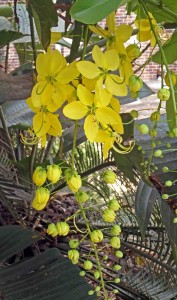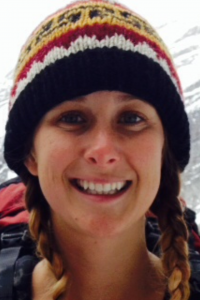Recreational Diver Behavior and Contacts with Benthic Organisms in the Abrolhos National Marine Park, Brazil
By: Giglio, Vinicius J.; Luiz, Osmar J.; Schiavetti, Alexandre ENVIRONMENTAL MANAGEMENT Volume: 57 Issue: 3 Pages: 637-648 Published: MAR 2016 | Find with Google Scholar »
|
Dear all,
Week 1 of S1 is almost over without too many hiccups – all good!
Thanks to all who came along to this week’s monthly Department meeting – for those who couldn’t be there, the slides are here.
cheerio
Michelle
Save the Date
This is a new section, with events and meetings of specific interest within the Department.
This coming week 7th – 11th March
Tues 8th March;G2G 2016 Launch Meeting; 1:00pm – 2:00pm; E8A-280 (tea room).
Wed 9th March: Morning tea on the Hill (10.30am) followed by Fauna Park Users Group meeting 11am
Wed 9th March; Weekly Seminar by A/Prof Charles Warren of USyd; 1:00pm – 2:00pm; E8A-280 (tea room).
Thurs 10th March; Thursday Drinks; from 4:00pm; E8A courtyard.
Following week 14th – 18th March
Mon 14th March; MRes Project Seminars; 9:00am onwards, Schedule TBA; E8A-280 (tea room).
Wed 16th March; Morning tea with HoD; 10:30am – 11:00am; E8A-280 (tea room).
Wed 16th March; Weekly Seminar by Dr Karrie Rose of Taronga Zoo; 1:00pm – 2:00pm; E8A-280 (tea room).
General News and Announcements
International Women in Science Day – next Tuesday March 8th
Next Tuesday March 8 is International Women’s Day. The University will be running a number of events including stalls and activities in the courtyard from 12-2pm – see web link.
Physics and Astronomy are planning to promote the work being done by female researchers in their Department, which is a great initiative and one that we could shamelessly copy or adapt (unless someone has a better suggestion – I’m all ears)!
Physics & Astronomy propose to have a Research Facebook and Twitter storm on Tuesday. I think Biology could manage at least a flurry.
If you are a female staff member (any level) or an HDR student who has played a major role in a research publication in the last year (lead author/equal lead author/final author/team leader etc), we invite you to participate in promoting your work as follows:
- Compose a short message (<=3 sentences) about your research result suitable for a facebook post: Not too technical, and with some kind of exciting hook. Make sure to include your name
- Include a url link to either the research paper or a web page/press release describing the result.
- Include an interesting image: it can be from the paper, doesn’t have to be.
- If you wish, include a photo of yourself. Optional, but it would be great.
- Email them all to fse.bio-hod@mq.edu.au – we will coordinate assembling the posts and schedule their release on Tuesday
- We’ll also link to the Facebook posts on the Department’s page at https://www.facebook.com/BiologicalSciencesMQ/ from our twitter feed @MQBiology (yes it’s new – so follow and tweet away!)
You can write the tweet yourself (remember <=140 characters!) and send it to fse.bio-hod@mq.edu.au, or we’ll do it for you.
Either way, let us know your preferred hashtags: some obvious candidates are #WomenInSTEM, #WomenInBiology, #IWD2016
As an alternative to a research result, you may be in a position to promote an exciting outreach and teaching initiative you’ve worked on if the web resource is there to link to. That would be great too.
To get the processing done, we’ll need your submissions to fse.bio-hod@mq.edu.au by next Monday lunchtime. If anyone is a Facebook or Twitter afficianado and would like to volunteer to help out on Monday afternoon please let Michelle know.
Weekly Seminar – A/Prof Charles Warren
Title: How does drying and re-wetting affect the soil carbon cycle?
Abstract: Cycles of soil drying followed by rewetting are ubiquitous features of most ecosystems and have a massive effect on biogeochemical cycles. Drying slows most soil processes, while rewetting leads to a massive pulse of carbon (C) mineralisation. These pulses are globally important, for example, in many ecosystems dry-wet cycles can account for ≥ 25% of annual amounts of CO2 released from soil to atmosphere.
It is unclear why we see such a massive pulse of CO2 from soil that has been re-wet. One theory is that in drying soil there is a massive accumulation of osmolytes within microbes. Rewetting leads to lysis of microbes and excretion of osmolytes, with the massive pool of released osmolytes serving as substrates for those microbes (and plants) that survived water stress – and thereby underpinning the flush of C mineralisation. However, there has been little experimental evidence for a substantive role of osmolytes in responses to dry-wet cycles. At least part of the reason for this may have been the difficulty of identifying and quantifying osmolytes in soil.
Work over the past several years has developed mass spectrometry methods for identifying and quantifying microbial osmolytes in soil. These methods have permitted the first true tests of the theory that osmolytes underpin the flush of mineralisation in dry soils that have been re-wet. This talk will focus on recent research examining how the soil C cycle is affected by drying and rewetting.
Date: 9th March, 2016
Time: 1 – 2 pm
Location: E8A-280 (Biological Sciences Tea Room)
Plant of the Week – Cassia fistula – Golden Shower Tree
Dominic Mcafee to Compete in the NSW State Final for FameLab
FameLab is a British Council run initiative to develop presentation skills. It consists of a 3 minute talk, no jargon, no powerpoint, but props, costumes, music and humour are all encouraged. Dominic has made the atate finals – please go along to support him;
Place: Powerhouse Museum
Date: 7th April, 2016
Time: 6 – 8:30pm.
Bookings are essential, but entry to watch is free, and can be made at this eventbrite link.
New Member of Darrell Kemp’s Research Team
Dr. Kate Lynch has joined Darrell’s Lab group as a full-time Level A Postdoc. Kate recently completed her PhD in the philosophy department (with VC commendation), and at the same time an undergraduate Biology degree no less. She is wonderfully bright and vibrant and sure to be a great asset to the Dept. Her position is funded partly by ARC and Horticulture-Aus, and deals with evolutionary genetics and adaptation.
From Kate: “Using the quantitative genetic framework my research is focused on the best way to understand the causal role played by genes, environment, epigenetics, and their interactions in generating phenotypic differences across evolutionary timescales. I will be investigating these issues across two projects: one funded by Horticultural Innovation Australia studying the Queensland fruit fly, and an ARC Discovery Project working on guppies. I am interested in evolutionary theory, evolutionary genetics and genetic causation, as well as theory and history of biology more generally.”
Please help make her feel welcome.
New PhD Student in Emma Lab
 Rachel Self is a new PhD student in the Biological Sciences Faculty, supervised by Michael Gillings and Steve Van Sluyter. Rachel recently completed her Mres with a project entitled “Screening Botrytis cinerea for proteases suitable for removing haze-forming proteins in winemaking” and will be delving deeper into the proteases secreted by B. cinerea throughout her PhD candidature. Her project aims to reduce the amount of bentonite used by winemakers, resulting in economic and environmental improvements to the winemaking process. Rachel will be situated in E7B 242.
Rachel Self is a new PhD student in the Biological Sciences Faculty, supervised by Michael Gillings and Steve Van Sluyter. Rachel recently completed her Mres with a project entitled “Screening Botrytis cinerea for proteases suitable for removing haze-forming proteins in winemaking” and will be delving deeper into the proteases secreted by B. cinerea throughout her PhD candidature. Her project aims to reduce the amount of bentonite used by winemakers, resulting in economic and environmental improvements to the winemaking process. Rachel will be situated in E7B 242.
Please show her the MQU hospitality!
United Nations Association of Australia – 2016 World Environment Day Awards
Each year on United Nations World Environment Day (June 5) the United Nations Association of Australia seeks to focus world attention on the environment, particularly on innovative programs that protect and restore our world’s natural heritage, through its World Environment Day Awards. The UNAA has actively promoted this important day through the World Environment Day Awards program since 2000. The Awards recognise the environmental achievements of individuals, community groups, local councils, schools, businesses and the media.
As a non-profit, non-government association we rely on the generous support of organisations such as yours to get the ‘Call for Entries’ message out to the Australian community. Please find attached our 2016 World Environment Day Awards publicity flyer. We would greatly appreciate if you are able to help us promote the Awards by displaying this flyer on your website, or sharing it through your members and networks.
Alternatively, if your organisation has implemented outstanding environmental initiatives or demonstrated environmental leadership then you may be eligible to enter the Awards! You can view a full list of Award categories and eligibility requirements here.
For more information please email awards@unaavictoria.org.au or call the UNAA on 03 9670 7878.
Fundraiser
Karen Marais loves walking and for several years has walked for charity. In March she will be taking part in two events to fundraise for the Fred Hollows Foundation and for the Cancer Unit at Westmead Children’s Hospital. On Friday 4th of March,she is walking Coastrek, a 50km walk fundraising for the Fred Hollows Foundation. If anyone would like to contribute to this worthy cause, please click on the following link. http://coastrek.cmail20.com/t/r-l-eldkkjt-djxokdjk-j/
Then on the 20th of March Karen will walk 28km in the Bob Tug Wilson Walk for Kids with Cancer. To contribute please click on the following link http://walkforkidswithcancer2016.gofundraise.com.au/page/KarenMarais1
Binless Office Trial
The Biology Department has approx. 120 staff and 70 HDR students. The majority have their own desk and under desk bin. These bins are emptied daily, and in most cases the plastic bin liners are changed weekly.
That’s almost 10,000 plastic bags a year! Going to landfill!
We have a solution. See attachment and Department meeting slides for more info.
Binless_Office_DeptMatters_4March
New Publications
What caused extinction of the Pleistocene megafauna of Sahul?
By: Johnson, C. N., J. Alroy, N. J. Beeton, M. I. Bird, B. W. Brook, A. Cooper, R. Gillespie et al. In Proc. R. Soc. B, vol. 283, no. 1824, p. 20152399. The Royal Society, 2016. | Find with Google Scholar »Length-weight and length-length relationships for six flounder species (Pleuronectiformes) from the eastern coast of Korea
By: Kwak, S. N.; Park, J. M. JOURNAL OF APPLIED ICHTHYOLOGY Volume: 32 Issue: 1 Pages: 160-162 Published: FEB 2016 | Find with Google Scholar »Leaf mechanical resistance in plant trait databases: comparing the results of two common measurement methods
By: Enrico, Lucas, Sandra Díaz, Mark Westoby, and Barbara L. Rice. Annals of botany 117, no. 1 (2016): 209-214. | Find with Google Scholar »Regional-scale compositional and size fidelity of rocky intertidal communities from the Patagonian Atlantic coast.
ARCHUBY, FERNANDO M., MARIANA ADAMI, JULIETA C. MARTINELLI, SANDRA GORDILLO, GABRIELA M. BORETTO, and MARIANO E. MALVÉ. Palaios 30, no. 8 (2015): 627-643. | Find with Google Scholar »Evaluation of next generation sequencing for the analysis of Eimeria communities in wildlife.
By: Vermeulen E. T., Lott M. J., Eldridge, M. D. B., Power, M. L. (2015) Journal of Microbiological Methods. | Find with Google Scholar »The Rarefaction of Phylogenetic Diversity: Formulation, Extension and Application
By: Nipperess, David A. In Biodiversity Conservation and Phylogenetic Systematics, pp. 197-217. Springer International Publishing, 2016. | Find with Google Scholar »Genetic rescue benefits persist to at least the F3 generation, based on a meta-analysis.
By: Frankham, Richard. Biological Conservation 195 (2016): 33-36. | Find with Google Scholar »Gene expression under thermal stress varies across a geographical range expansion front
By: LESLEY T. LANCASTER, RACHAEL Y. DUDANIEC, PALLAVI CHAUHAN, MAREN WELLENREUTHER, ERIK I . SVENSSON and BENGT HANSSON. (2016) Molecular Ecology. 25, 1141–1156. doi: 10.1111/mec.13548. | Find with Google Scholar »



